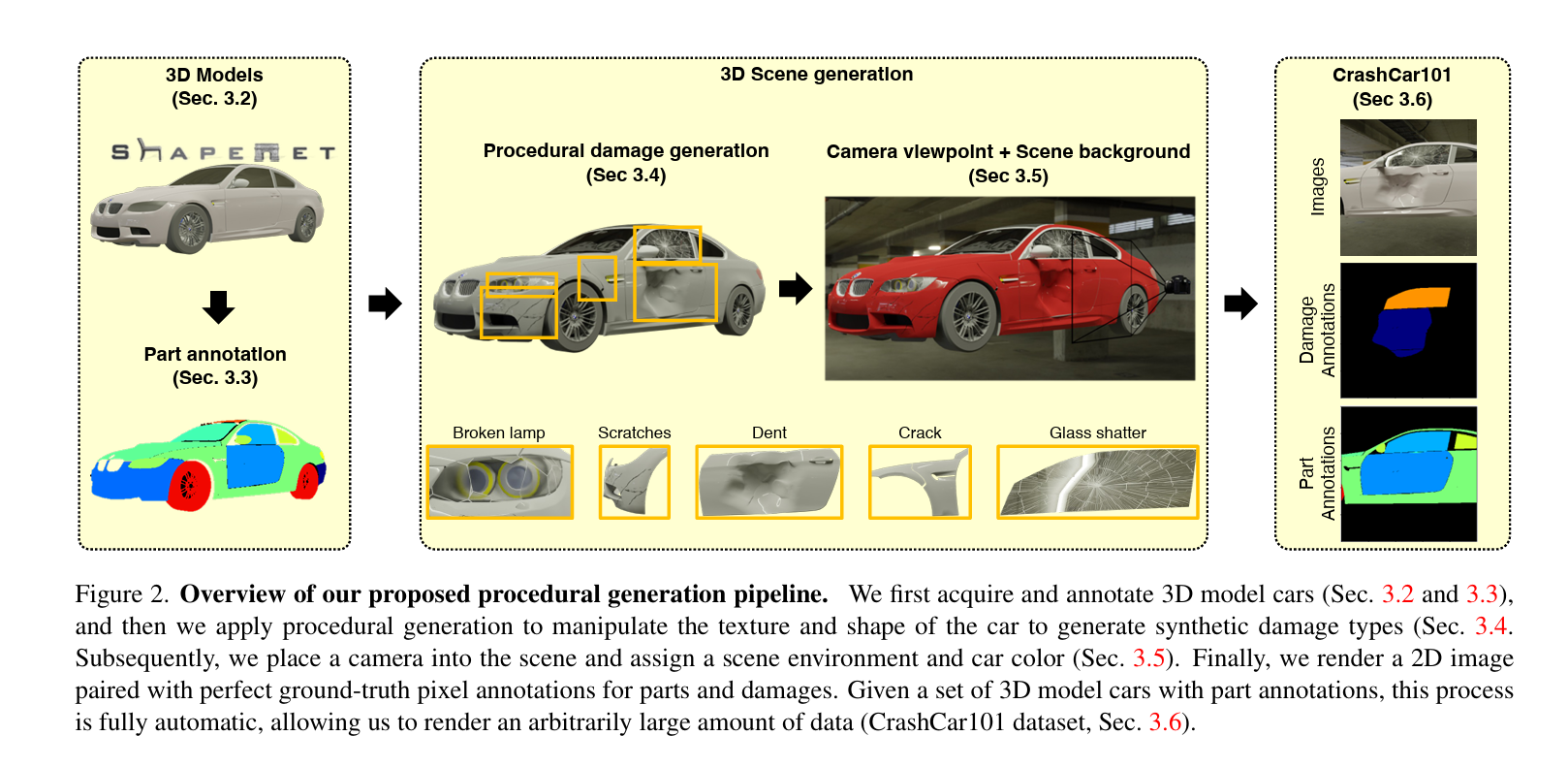Assignment 3
Points:
- Dataset : 25 points
- Training: 25 points
- Tracking: 50 points
- Procedural Synthetic Dataset: 100 points (extra-credit or substitution)
Car Dent Segmentation
In this assignment you will implement a car damage identification system.
Car Damage segmentation dataset
Use model using the Car Damage Detection. The dataset contains images of damaged cars and their corresponding segmentation masks.
Model
You will use the visual perception engine, that places a foundation model in front of multiple heads. For the foundation model you can use DINOv3. You need to implement and train the segmentation head only and the object bounding box can then be determined from the predicted segment.
Tracking and counting dents
The instructor will upload to youtube a video of a car with dents and other damages.
Implement the Deep SORT algorithm to track the centroids of the dents across video frames and count their number as the video progresses. The video should display the number of dents and their segments / bounding boxes.
Procedural car damage generation (Substitution - only for students with NVIDIA GPU > 16GB VRAM)

In many problems in computer vision we suffer from the lack of training data. This is especially true for problems that require pixel-level annotations, such as image segmentation. In this assignment, you will create a car damage dataset using procedural generation.The implementation should be based on the approach suggested in this page. You will use Blender to create synthetic images of cars with various types of damage, such as dents, scratches, and cracks. You can follow the tutorial below to create your own procedural car damage generator.
You can optionally use Replicator - as shown in the following video .
The final synthetic dataset should contain at least 1000 images from 1-5 3D car models.